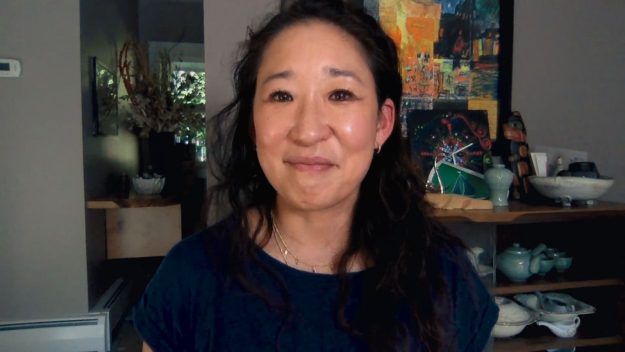March 13, 2023 marks three years since COVID was first declared a national emergency in the US. This week, we’ll be sharing pieces that reflect on how COVID altered all of our lives.
I’ve long wanted to make a movie on something like the sneeze that goes around the world, or the dollar bill that goes from hand to hand. A cinematic display of the layers of interconnection large and small that make up our lives every single day, through joys and sorrows and complacent idylls and wild shatterings of expectations like lockdowns and COVID. A movie about how even in the most turbulent times, some things remain true. Maybe that sneeze started in Battery Park in New York City, and by the time we see someone’s nose start to wiggle in just-about-to-sneeze mode in Dubai, we have settled back into the most salient truth of all of our lives: We are all connected.
Watching the film The Same Storm, which came out in September 2021, it struck me that writer and director Peter Hedges had just made my longed-for film about interconnection and intersectionality, and made it with great skill. The film consists of twenty-four actors filming vignettes on laptops and iPhones during the early days of the pandemic. No film crews and no trailers involved. “The Same Storm revolves around our ache to connect and the extraordinary lengths we go in order to,” the filmmakers say. “We crafted a multi-protagonist story that explores how—in spite of the pandemic and the havoc it has caused in a nation convulsing on multiple fronts—we remain connected through various technologies and platforms that have quickly become a critical part of our daily lives.”
Interconnection tips over into intersectionality—we are each more than one thing, not so easily reduced or even categorized. Maybe that nurse on the screen, in addition to having a patient, has a mother, and a racial identity, and a lot of longing in his heart to not feel so alone. Everyone is kind of complicated that way. Some facets of our being are sources of power, some of disconnection, some of clarity, some of confusion. These unchanging truths greet us as we swirl through the extreme change of our recent traumatic experiences of the pandemic.

How close to the time of a traumatic event one can write or produce or create a work that is more art than trauma is a subject of much debate. I’ve gotten various pieces of advice from different people about that topic, along with watching varied cultures around the world work on healing in real time while sometimes also producing some of the greatest literature the world has known, and sometimes producing, in terms of public art … pretty much nothing. Any healing on any level itself is an awful lot. We go down the chakras, as a friend of mine cleverly said. Sometimes our main job is just to survive. And brava that we do.
A lot of people don’t want to look back at all right now, and you can read that in the dismissive language chosen in some of the reviews of works done soon after a traumatic time. But I’m so glad that Peter, who is a friend, and his producers, who are also friends, did, and that those amazing actors got a chance to perform, despite the reported awkwardness of the technology or having to do their own makeup. Acting on that level really is a matter of the soul, and there we were at that point in time, so often cut off, more and more isolated from one another, and for those for whom making art means collaboration, mostly out of luck.
The actors in The Same Storm include Mary Louise Parker, Sandra Oh, Ron Livingstone, Jin Ha, Daphne Rubin-Vega, Raul Castillo, Joel Delafuente, Noma Dumezweni, and Elaine May (in her first film performance in twenty-one years!) The performances are luminous. This isn’t a mere recounting (which in the end wouldn’t be all that enticing.) This level of storytelling reveals that there could be a way forward. There must be, please, and look! There is.
It has something to do with empathy, and compassion.
I once heard the Dalai Lama on creativity, as part of a panel at Emory University, responding to a question about suffering, transformation, and art.
He was quite interesting. He said that in Tibet, beautiful art was considered so because of the inner transformation artists went through during the act of creation. Had they become more enlightened, kinder, more deeply aware? To him, that’s what made a poem or a sculpture or painting more valuable, worthy of being held in higher esteem. Alas, we tend to have different criteria.
Watching The Same Storm I’m tempted to ask Peter Hedges what he thinks of the Dalai Lama’s answer. Gratefully seeing the extant hope shimmering across the screen, remembering the despair, I have a feeling I know the answer.
♦
This article was first published on November 18, 2022.